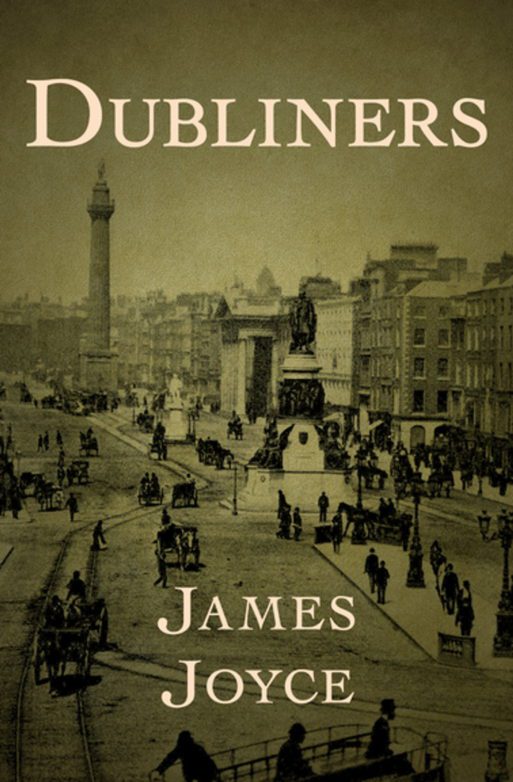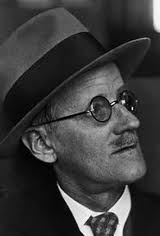 James Joyce is not necessarily an author for everyone. His works are not for your average paperback reader. Ulysses and Portrait of the Artist as a Young Man endure as two of the most significant works in 20th Century literature, creative and impenetrable, autobiographical, yet (mostly) accessible to those readers who take the time and effort to apply themselves. In Dubliners, a book of thematically linked short stories set in Joyce’s hometown of Dublin, Ireland, the author paints a sure, steady and patient portrait of the nation and town of his day, wrought with political turmoil, moral turpitude and aborted romanticism. Death, as a presence, a universal reckoning, and a literary device, is a constant throughout the stories, but most notably and famously in the final story, “The Dead,” a masterpiece of the form and widely considered one of the best short stories ever written.
James Joyce is not necessarily an author for everyone. His works are not for your average paperback reader. Ulysses and Portrait of the Artist as a Young Man endure as two of the most significant works in 20th Century literature, creative and impenetrable, autobiographical, yet (mostly) accessible to those readers who take the time and effort to apply themselves. In Dubliners, a book of thematically linked short stories set in Joyce’s hometown of Dublin, Ireland, the author paints a sure, steady and patient portrait of the nation and town of his day, wrought with political turmoil, moral turpitude and aborted romanticism. Death, as a presence, a universal reckoning, and a literary device, is a constant throughout the stories, but most notably and famously in the final story, “The Dead,” a masterpiece of the form and widely considered one of the best short stories ever written.
The first story in the collection is called “The Sisters,” and it is a relatively brief, deceptively simple telling of a young Catholic student’s first experience with death, that of a priest, no less. The point of view is first person, a device employed in the first three stories which center on youths, but later discarded in favor of third person, and a more eagle eye focus of the city of Dublin. Tension between social mores and civic realities are painfully apparent. Even in this ostensibly pious country, moral degradation is brought to the fore, most strikingly in “Two Gallants,” a short and tale of two ne’er do wells who take advantage of a young lady housekeeper. One of the subjects convinces her to rip off her employer, and the episode is related as merely another in a long line of such occurrences. “After the Races” features a group of European continental revelers carousing carelessly through the streets; “Araby,” a lovelorn teenager casually robbed of his naivety. And yet it is not until “The Dead” that Joyce brings all of his themes together, and resolves them with the grace, clarity and complexity that such matters are due.
Gabriel Conroy, the protagonist of this final story, is a man of letters and propriety, and yet he is hopelessly removed from the realities around him. Confronted by political struggle, personified in a nationalistic childhood friend who easily and simply exposes his hypocrisy, he is easily flummoxed. An easily manipulated hero within his own family, perhaps in part because of his willful naivety, he is not taken entirely seriously. The story centers on a dinner party among the Dublin elite, yet the harsh realities just outside the gilded doors are omnipresent threats always threatening to intrude. It is snowing outside, and, by both a secondary characters’, and the author’s telling, the snow is “general throughout Ireland.”
But it is not until the story’s conclusion that death and its beautiful, terrible impact is fully brought to the fore. Despite minor social setbacks, Gabriel has triumphed at the dinner party. His speech was a success, he diverted an embarrassingly inebriated relative, and his aunts and cousins thanked and congratulated him profusely for both. Back at his apartment, he is now alone with his wife, whom he had observed earlier listening to another party-goer sing an Irish folk song. When he asks her what she is thinking, hoping to elicit a romantic response, she answer him that she is thinking about this song, and, more importantly, the young boy who once sang it for her. A boy named Michael Furey, who, when she was a teenager, in the midst of rain and snow and freeze and even illness, came to her window on the night before she was to leave the town, and sang this song. He died of exposure only a brief time later. Gabriel’s intensions and pretensions are instantly shattered. While he was congratulating himself for navigating the superficial waters of the social gathering, his wife was consumed with a pre-occupation entirely different — a young love that, in its perfect innocence and, in death, eternal beauty, could never be fully rivaled, and an Ireland completely outside the image carefully contrived and protected by Gabriel and his family.
After Gretta goes to sleep, Gabriel stays awake, watching the snow outside his window, and he wonders: “Better pass boldly into that other world, in the full glory of some passion, than fade and wither dismally with age… He watched sleepily the flakes, silver and dark, falling obliquely against the lamplight. The time had come to set out on his journey westward.” That is, into the truth of his homeland, and the truth of life and love that his own wife, until then, had so successfully held inside her. Gabriel has learned something. Most likely his life will never be the say. And, meanwhile, as the final passage in the story tells us, the snow will continue to fall, “like the descent of their last end, upon all the living and the dead.”
- Check out a prior SevenPonds exploration of “The Dead.”
- Discover this interesting Irish film, In Bruges.

 “Dubliners,” by James Joyce
“Dubliners,” by James Joyce



 How Dare You Die Now!
How Dare You Die Now!
 Debating Medical Aid in Dying
Debating Medical Aid in Dying
 “Help Me, Helen”
“Help Me, Helen”














